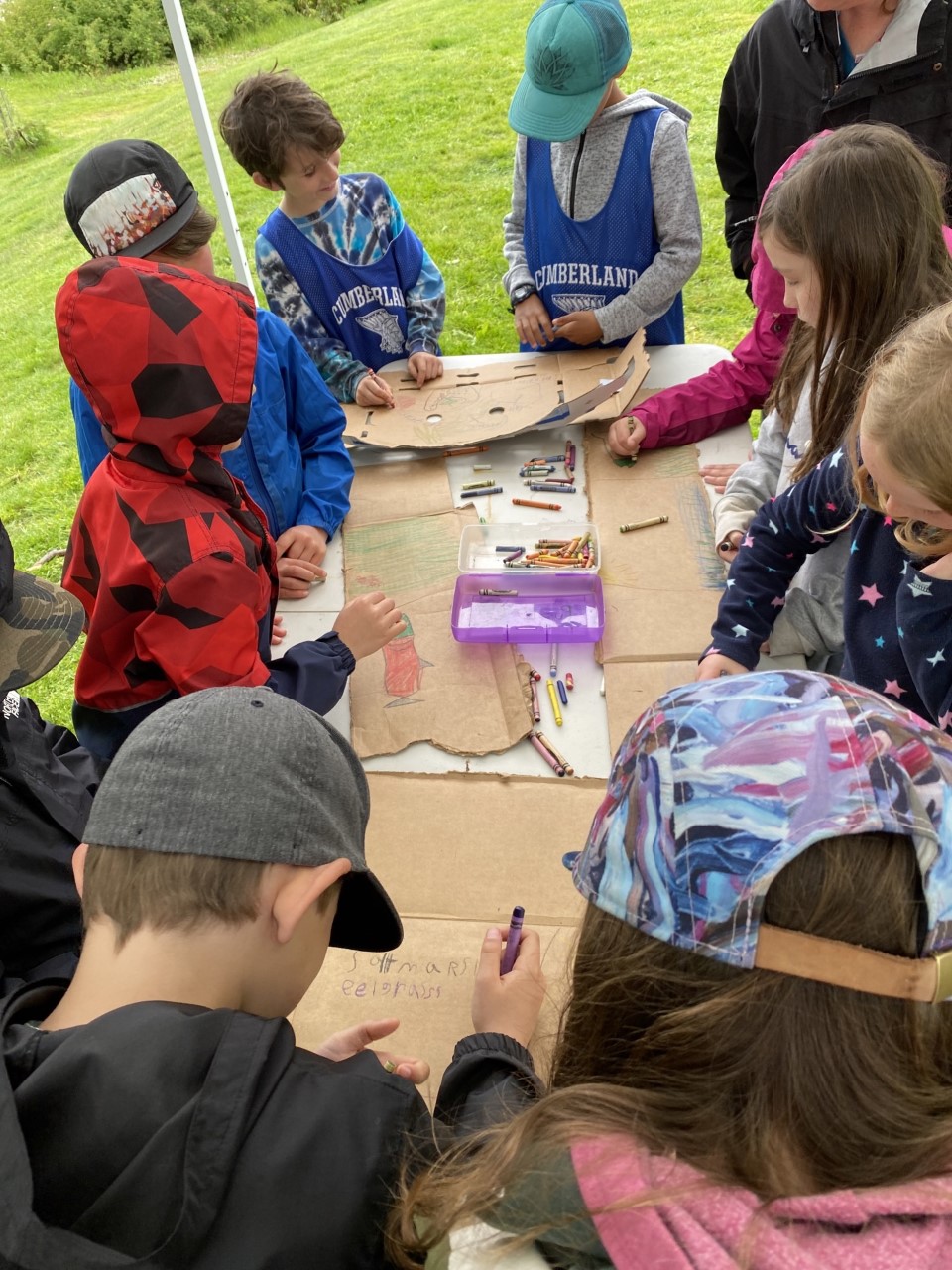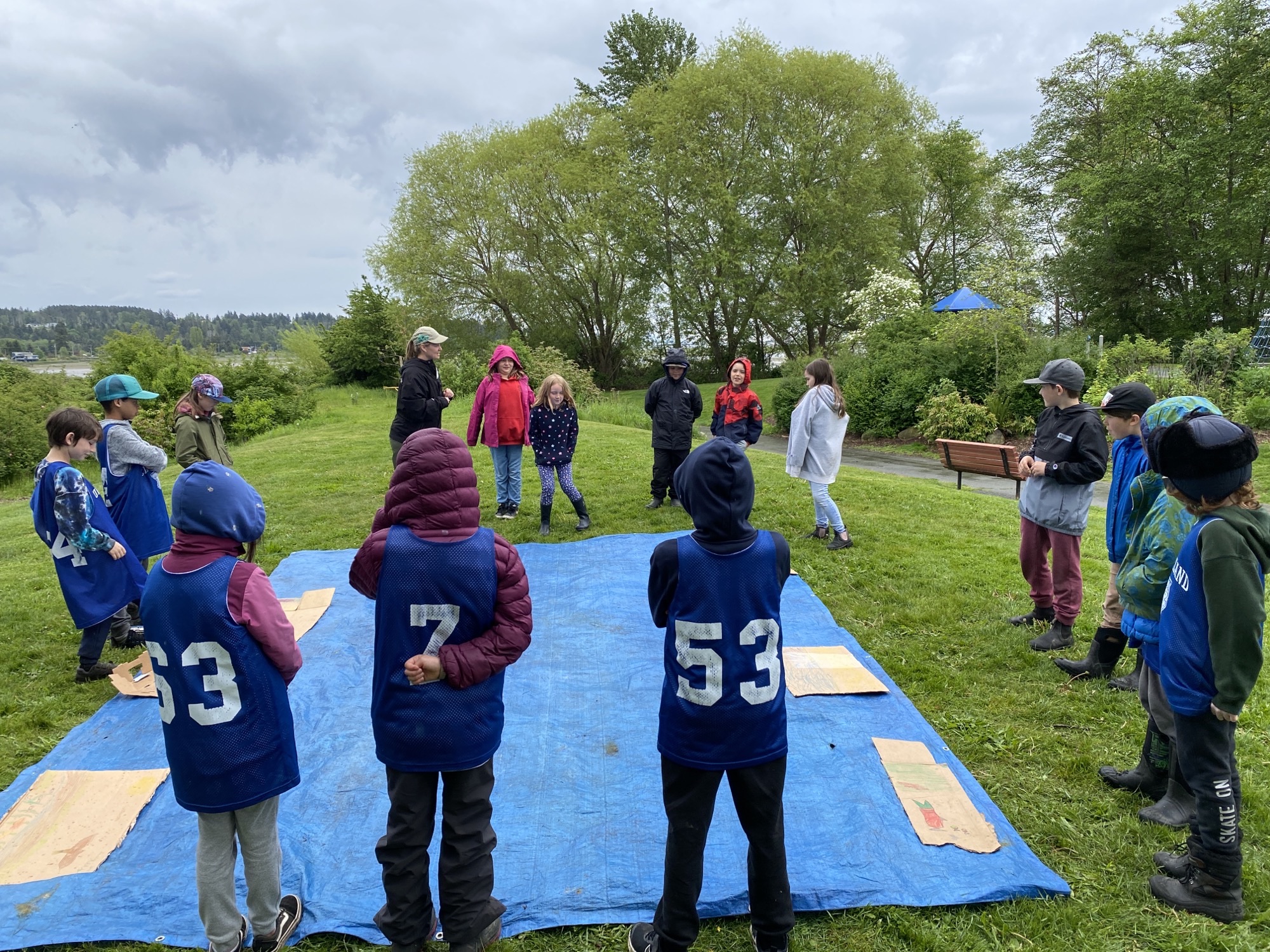Salmon Versus Seals Game
Suggested Grades: ALL
Driving Questions
- Why are streamside plants important to salmon?
- How does human activity near streams affect salmon?
Learning Intentions
- I can tell others how salmon use streamside plants.
- I can see how stressful it is for salmon to not have streamside vegetation.
Materials
- Blue tarp or blanket – approx 10 ft by 20 ft
- Cardboard pieces – each piece should be 2 ft wide by any length
- Caryons/Markers
- Pictures of salt marsh plants
Curricular Competencies
Science
- Questioning and predicting
- Evaluating and applying knowledge
- Comprehending and connecting
Arts:
- Creating and communicating
Lesson
- Discuss salmon migration down the river out to the ocean and up river to spawn.
- Show salt marsh images to the class.
- Have students draw salt marsh plants on to cardboard pieces. If they draw other creatures using the habitat that is fine.
- Set up the game – this entails laying out the tarp and putting the cardboard along the two longest parallel edges. The tarp represents the Courtenay River and the cardboard pieces are riverside habitat.
- Play the the game: The game is to be played in two parts – first with the cardboard habitat lining both sides of the river to illustrate fish going through or by Holly Hock Marsh and after with no carboard (habitat) on one side to illustrate areas where development has removed the shoreline vegetation (e.g. the steel wall in front of Kus-kus-sum). Three people are choosen to be seals (can be teachers/parents) the seals and the rest of the students are the salmon. Split the “salmon” into two groups so there is about 10 students in each group. Talk about the salmon going downstream to the estuary (fresh water to salt) and then out to the ocean when they are young. You can mention that it takes time for a salmon’s body to get used to the salt and so many species of salmon stay in the estuary/lower river system to allow this process to happen (called acclimation). When the students go the other way, talk about going upstream to the upper watershed to spawn as adults (note: species that live part time in fresh and part time in salt are called Anadromous). The goal is for the salmon to make it from one end of the trap to the other. In the salt marsh the salmon are safe and they can stay there for 15 seconds. Puppy guarding is allowed because in the real-world seals will hang out and wait for salmon for a little bit. When there is no salt marsh on one side the seals change their positioning so that they can force some of the salmon to that side and pick them off. We usually give a time limit of 2 minutes for each lap, but students are usually well within that. Each time a round finishes we ask the students to tell us the differences in how it made them feel/act. They should be more scared (more stressed) and have to swim faster (also more stress) when there is less habitat. More salmon should be caught in the second rendition of the game. You can play the game multiple times using different arrangements of hte habitat – spacing the pieces farther apart, using differing amounts of habitat to further explore the relationship between salmon and streamside habitat.


Community Connection
Contact Project Watershed to demonstrate this activity at your school or on a field trip.

